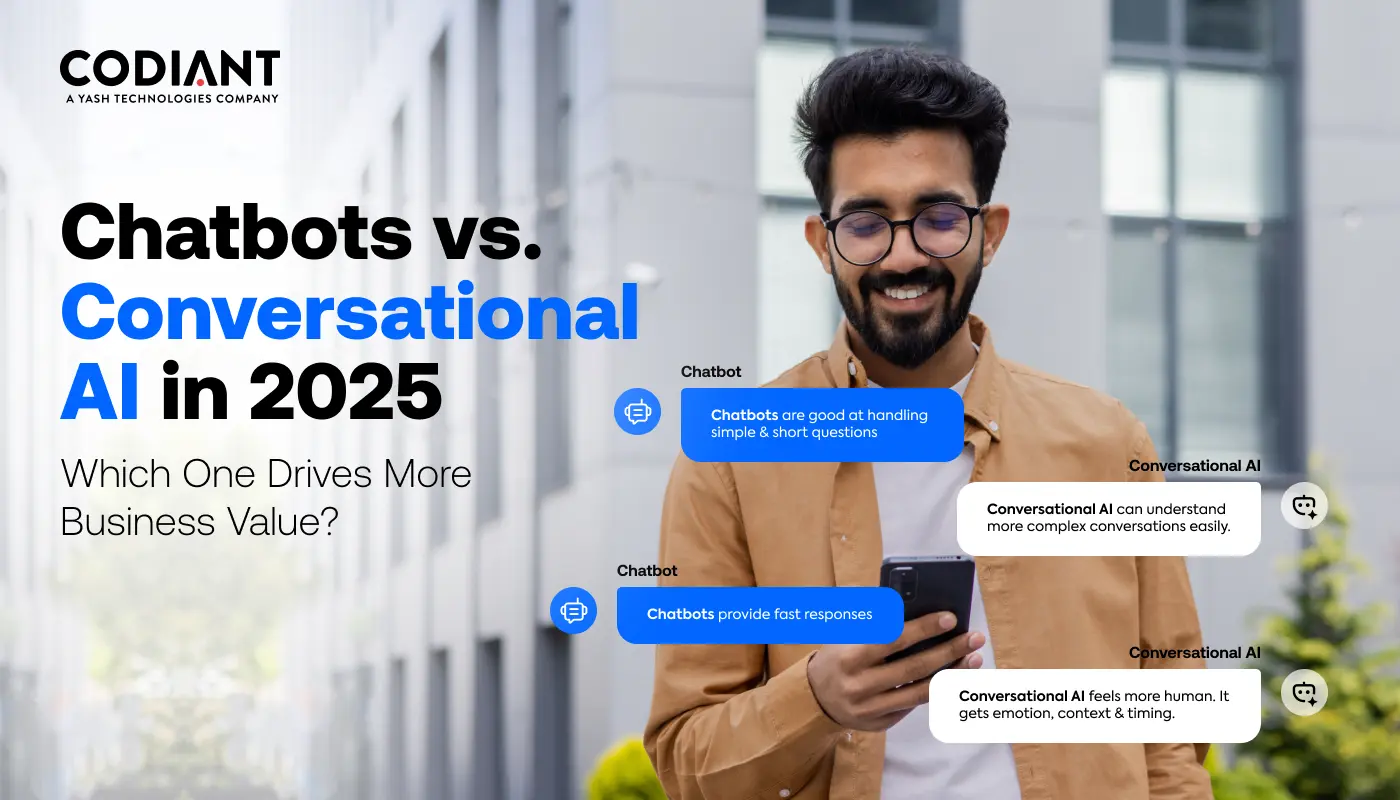AI in Agriculture — The Future of Farming
Table of Contents
Subscribe To Our Newsletter

In modern times, when artificial intelligence (AI) is leaving its trail in almost every sector, agriculture is one of them. From generating employment to donating to National Income, agriculture is greatly impacting the economy of the Nations.
The Agriculture Industry, traditionally known for manual labor, material handling work, and personal understanding, is experiencing a massive change, all because of the evolving technology and infusion of AI in the agriculture industry.
AI in agriculture is promising technological growth by bringing smart ways of farming, producing a sustainable and efficient future for agriculture. Here’s how!
Benefits of AI in Agriculture
AI brings significant advantages to agriculture, making it more efficient and sustainable. Let’s break down the benefits to understand in detail.
Precision Farming

Farming faces challenges like not having enough resources and dealing with unpredictable factors, such as weather and soil issues. However, integrating AI into the agriculture industry can help solve these problems.
For instance, AI smart sensors can measure stress levels in plants and figure out ways to help. Also, AI uses big sets of data about soil and crops to predict how much food we can get and the best ways to grow it.
This helps farmers plan better and get more food. So, artificial intelligence is becoming a smart friend for farmers to help them make the best choices for their crops.
Cost Saving
Farmers can produce more crops using the same time, effort, and money as precision farming with the help of AI. This boosts their profit and lowers insurance costs through data-driven methods.
They can also save resources by understanding the minimum needed for a good harvest. But AI benefits farming in more ways than one. Smart machines and robots save money on labor by doing tasks accurately.
This means less spending on herbicides, irrigation, and cultivation. These cost savings make farming a profitable business, reducing challenges in the industry. So, AI in farming makes it an efficient, cost-effective, and more rewarding option for farmers.
Solving Labor Shortage
Agriculture demands hard work and the pay is also not good. Therefore, labors are leaving the work. We need something else to help with the lack of workers, and AI can be the solution. Smart robots and AI-powered equipment can do most tasks better and faster.
Things, like smart irrigation, driverless tractors, and robots can help farmers who can’t find enough workers. The cool thing about using AI is that these tools are super accurate and don’t get tired, so they can actually make farming more productive, even without many human workers.
Crop Health Monitoring

Just like our health depends on various factors, crops have their own set of needs. Things like soil nutrients, weather, pests, and crop strength affect their growth. Smart computer programs can learn about these factors and predict if crops might get sick before planting.
This helps farmers prepare in advance to protect their crops with little cost. Also, smart sensors can keep an eye on crops all the time. They notice problems like discolored leaves or harmful weeds that farmers might miss.
With AI, farmers can detect these issues early and fix them. Overall, helping them in reducing waste and using resources better.
Improved Irrigation System
Traditionally, farmers relied on their experience and available resources for irrigation. Now, with the help of AI, they can plan irrigation smarter. Even though we can’t create more water instantly, AI predicts water needs and weather, allowing farmers to irrigate more effectively.
Since water is becoming more deficient worldwide, using AI to manage water wisely is crucial. AI not only helps plan but can also do real-time irrigation without an expert present.
Smart irrigation systems, guided by AI, use sensors to check air humidity, soil moisture, and past data to automate watering. This not only boosts productivity but also improves harvest quality through precise irrigation.
Applications of AI in Agriculture
Automated Irrigation System

Smart AI programs with tiny sensors in the ground can take care of crops by deciding when to water them based on real-time info about soil and weather conditions. This cool system saves water and helps farmers do their work in a way that’s good for the environment.
Predictive Analytics
Predictive analytics is similar to having a tool that helps farmers predict future events based on data. This application allows farmers to plan forward by predicting weather conditions or understanding crop growth, enabling them to make informed decisions for a successful harvest.
Quality Grading
AI serves as a quality checker for crops by closely examining them to determine their quality. This helps farmers identify crops that meet high standards, ensuring that only the best produce is delivered from the farm to consumers.
Livestock Management

Spotting health issues in crops is much easier than detecting health problems in livestock, but AI makes it easy. Some companies are using drones and cameras with AI to watch over cows. It tracks unusual behavior and even recognizes things like giving birth.
With AI and ML, you can study how diet and surroundings affect cows, giving farmers useful tips to make cows happier and boost their milk production.
Smart Pesticide Application

Farmers know that using pesticides can be better. Doing it by hand is precise but slow. Machines are faster but not always accurate and might harm the environment. AI-powered drones combine the best of both.
They’re fast, precise, and can see with computers and spray just enough pesticide. However, the concept is new but getting better quickly and is promising smarter ways to protect crops.
Automatic Weeding & Harvesting

Just like how computers can spot bugs and diseases in plants, AI in agriculture can also find weeds using a smart process called computer vision.
This technology teamed up with machine learning, looks at the size, shape, and color of leaves to tell weeds apart from crops. Robots can then use this info to automatically weed fields.
This cool tech is already working, and as it gets easier to use, robots might do all the weeding and harvesting for farmers.
Sorting Harvested Crops

After harvesting, another crucial step is to sort crops based on their quality. AI helps in this task by quickly and accurately sorting the produce. It ensures that only the best crops reach the market. Overall, it reduces product wastage and ensures that consumers receive high-quality products.
Crop Price Forecasts
Farmers often struggled to choose the best crops for a good income, relying on local info and past high-value crops. But this info wasn’t enough. Now, thanks to AI’s predictive analytics, things are changing.
AI looks at many factors like weather, market trends, and supply rates. It learns from historical data to predict crop prices accurately, considering more variables than before. This helps farmers make smarter financial decisions.
Governments can also decide on better subsidies for vital crops, ensuring farmers get fair returns and improving food security.
Can AI revolutionize agriculture?
Yes, farming is transformed by AI thanks to labor solutions, cost reductions, and precision. It guarantees sustainable practices and a bright future for the sector, promoting better crops, less labor, and more food production efficiency. Examples of these include automated irrigation and predictive analytics.
Challenges & Solutions of Implementing AI in Farming

- AI helps farms save money in the long run, but starting with AI can cost a lot. Small farms or those struggling with money might find it hard to get AI. But as tech gets better, AI costs might go down. And businesses can look for money help from the government or private investors.
- It’s tough for farmers to try AI when they’re used to their old ways. Farmers need to know that AI is just a fancier version of what they already use. To get farmers on board, the government and companies should help, give resources, and teach them. Rules should be made to make sure workers know AI is safe.
- Some places use high-tech tools in farming, but not everywhere. In some countries, people don’t know much about new farming technologies. Tech companies going to these places need to do more than selling stuff. They should teach farmers and businesses how to use the new tech and support them as they start.
- Besides not knowing much about tech, farms don’t even have the right setup for AI. Even farms with some tech might find it hard to change. It’s a difficult problem for farms and also for tech companies. One way to fix this is to introduce tech slowly. For example, start with simple tech like a tool to trade farm goods. Once everyone gets used to it, add more cool tools.
- AI is still growing, so it has limits. Good AI needs good data, which can be rare in farming. Robots with sensors might struggle in changing fields. Fixing these issues needs lots of study. Farmers should also stay in charge, not just let AI decide everything. Checking AI decisions manually can help, especially at the start.
- There aren’t many rules for AI in all jobs. Using AI in farming can bring up legal questions. Security issues like cyberattacks and leaking data can mess up farms. There’s even a chance that hackers might disturb AI farming to stop food from getting to people.
What is the Future of AI in Agriculture?
AI is becoming a big part of farming, helping it grow better. It’s like how we went from basic tools to tractors, and now we have AI. Each step made farming easier.
AI in farming brings cool tools like smart machines and robots. These machines do repetitive tasks so that farmers can focus on important things.
AI can also help with climate issues and make farming better for the environment. It’s like having a smart helper that learns and solves problems to grow more food.
The future of AI in agriculture looks promising! However, using AI requires farmers to learn new things. So, the future of farming with AI is bright but needs some learning and changes.
Summing Up!
AI helps farmers use less and get more, saving money and resources. From predicting crop needs to fighting diseases, AI is the farmer’s friend. But there are challenges, like costs and some farmers being unsure.
Yet, the benefits are huge, such as better crops, less work, and a brighter future for farming. As we move forward, teamwork and smart rules will make sure AI in farming grows strong, helping us all have better food on our tables.
Featured Blogs
Read our thoughts and insights on the latest tech and business trends
How to Modernize Legacy Systems with AI – A Step-by-Step Guide
- October 31, 2025
- Artificial Intelligence
In a Nutshell: Legacy systems aren’t outdated - they’re underutilized. AI can modernize them without full replacement, saving time and cost. Modernization is a journey, not a rebuild. Start small with automation, data clean-up &... Read more
Top Reasons Why Healthcare Providers Need Mobile Apps Today
- October 27, 2025
- Healthcare
If you’ve been to a clinic lately, you might have noticed something new-paper forms are almost gone and screens are everywhere. From booking doctor visits online to checking your recovery updates on your phone mobile... Read more
Which is Better for Your Business in 2025- Chatbots or Conversational AI?
- October 22, 2025
- Artificial Intelligence
In a Nutshell: Chatbots = Simple & Fast- Great for FAQs, appointment bookings & routine customer support. Conversational AI = Smart & Scalable- Uses NLP and machine learning to understand context, personalize replies & handle... Read more




